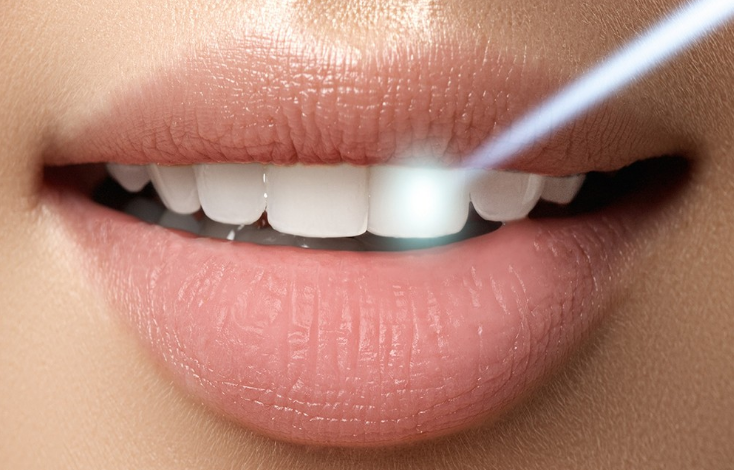Laser Gum Disease Treatment: An Alternative to Dental Surgery

To many people, gum disease may seem like an inevitable consequence of having teeth. However, this is far from the truth. While it’s true that genetics plays a significant role in your risk of developing gingivitis and periodontitis (the two primary forms of gum disease), there are other factors that can increase your risk of contracting it as well. Smoking, for example, has been shown to increase your risk of developing periodontitis. However, there are still many cases that require surgical intervention or extractions – two things that most people would prefer to avoid if possible. Thankfully, laser gum disease treatment has become increasingly popular in recent years as an alternative to traditional methods such
Poor oral hygiene, stress, and even pregnancies have also been linked to a higher risk of contracting gum disease. In recent years, dental awareness has increased significantly among the general population, leading to many more people making a concerted effort to take better care of their teeth and gums. As a result, the prevalence rate of gum diseases has fallen dramatically over time.
What Is Laser Gum Disease Treatment?
Laser gum disease treatment is a non-invasive dental procedure that is used for the treatment of mild to moderate cases of gum disease. During the procedure, the dentist will apply a laser to the infected areas of the gums to either kill or remove the bacteria, stopping them from further damaging the area. Depending on the severity of the infection, the procedure can be completed in one or two sessions. The laser treatment is also used in conjunction with scaling and root planning to eliminate bacteria and strengthen the teeth. Laser gum disease treatment is considered an alternative to traditional gum disease treatments, such as dental surgery and extractions.
Why Is Laser Gum Disease Treatment Considered an Alternative?
Gum disease is a bacterial infection that occurs when the plaque on your teeth is not removed regularly. If you do not brush your teeth at least twice a day, floss at least once a week, and visit your dentist for a cleaning once a year, you are at a higher risk of developing gum disease.
Laser gum disease treatment is considered an alternative to traditional methods because it is a non-invasive procedure done in the dentist’s office while other treatment options require more invasive procedures done in the hospital. It is also less expensive compared to other methods such as dental surgery and extractions.
How Does Laser Gum Disease Treatment Work?
During a laser gum disease treatment, the dentist will apply the laser to the infected areas of the gums. The laser will either kill or remove the bacteria, stopping them from further damaging the area. Depending on the severity of the infection, the procedure can be completed in one or two sessions. The laser treatment is also used in conjunction with scaling and root planning to eliminate bacteria and strengthen the teeth.
Laser gum disease treatment uses a light source to remove the bacteria from the infected areas of the gums. The laser light is applied to the infected areas of the gums, killing the bacteria that are causing the infection and improving the gum health. Depending on the severity of the infection, the procedure can be completed in one or two sessions.
Benefits of Laser Gum Disease Treatment
Laser gum disease treatment is considered an alternative to traditional methods because it is a non-invasive procedure done in the dentist’s office while other treatment options require more invasive procedures done in the hospital. It is also less expensive compared to other methods such as dental surgery and extractions.
Another advantage of laser gum disease treatment is that it does not require the patient to take antibiotics to clear the infection. Laser gum disease treatment is an excellent choice for people who have mild to moderate gum disease and want a less invasive treatment solution. Another benefit of laser gum disease treatment is that it does not require the patient to take antibiotics to clear the infection.
Disadvantages of Laser Gum Disease Treatment
Like any other treatment option, laser gum disease treatment has its share of disadvantages. First and foremost, laser gum disease treatment is more expensive compared to other treatment options such as scaling and root planning. Another disadvantage of laser gum disease treatment is that it does not treat gum disease that is already established. The primary disadvantage of laser gum disease treatment is that it does not treat gum disease that is already established. That being said, laser gum disease treatment is most effective when used to treat mild to moderate gum disease.
Conclusion
Gum disease is a bacterial infection that occurs when the plaque on your teeth is not removed regularly. Laser gum disease treatment is a non-invasive procedure done in the dentist’s office while other treatment options require more invasive procedures done in the hospital. Laser gum disease treatment is an excellent choice for people who have mild to moderate gum disease and want a less invasive treatment solution.
References:
1-Poor oral hygiene as a risk factor for infective endocarditis–related bacteremia
Available online 30 December 2014.
https://doi.org/10.14219/jada.archive.2009.0046
2-New ways to treat bacterial infections
Available online 14 November 2002.
https://doi.org/10.1016/S1359-6446(02)02498-4



